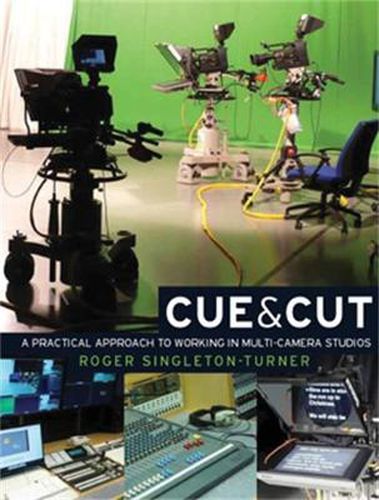Readings Newsletter
Become a Readings Member to make your shopping experience even easier.
Sign in or sign up for free!
You’re not far away from qualifying for FREE standard shipping within Australia
You’ve qualified for FREE standard shipping within Australia
The cart is loading…






Cue & Cut is a ‘practical approach to working in television studios’ covering the use of equipment and how to create content from simple interviews to drama. Though not a BBC book, the text gives a twenty-first century, HD and tapeless twist to what the BBC taught Directors in the final decades of the twentieth century. There is even a glance at 3D HDTV. The book introduces TV studios, gives information on jobs and basic elements of programme making and goes on to examine drama, music and action on multi-camera television. The author has spent over 40 years working in television, mostly as a Director and Producer of single and multi-camera drama for children. He also has taught Directors at the BBC and on Honours BA, HND and other practical training courses in the UK. The book is therefore firmly based on first-hand teaching experience and first-hand experience of producing and directing, including work with top-flight Actors, Writers, Musicians, Designers, Sound and Camera Crews, both at the BBC and in ITV. The book certainly covers multi-camera aspects of Undergraduate, and diploma programmes and should be useful to those on short courses, whether practical or post-graduate. Although the book is firmly practical, there is a significant amount of background and history, explaining - in part - how things came to be the way they are. The author’s credits include a BAFTA award-winning Grange Hill and the BAFTA and RTS short-listed The Demon Headmaster as well as three other books on television.
$9.00 standard shipping within Australia
FREE standard shipping within Australia for orders over $100.00
Express & International shipping calculated at checkout
Cue & Cut is a ‘practical approach to working in television studios’ covering the use of equipment and how to create content from simple interviews to drama. Though not a BBC book, the text gives a twenty-first century, HD and tapeless twist to what the BBC taught Directors in the final decades of the twentieth century. There is even a glance at 3D HDTV. The book introduces TV studios, gives information on jobs and basic elements of programme making and goes on to examine drama, music and action on multi-camera television. The author has spent over 40 years working in television, mostly as a Director and Producer of single and multi-camera drama for children. He also has taught Directors at the BBC and on Honours BA, HND and other practical training courses in the UK. The book is therefore firmly based on first-hand teaching experience and first-hand experience of producing and directing, including work with top-flight Actors, Writers, Musicians, Designers, Sound and Camera Crews, both at the BBC and in ITV. The book certainly covers multi-camera aspects of Undergraduate, and diploma programmes and should be useful to those on short courses, whether practical or post-graduate. Although the book is firmly practical, there is a significant amount of background and history, explaining - in part - how things came to be the way they are. The author’s credits include a BAFTA award-winning Grange Hill and the BAFTA and RTS short-listed The Demon Headmaster as well as three other books on television.